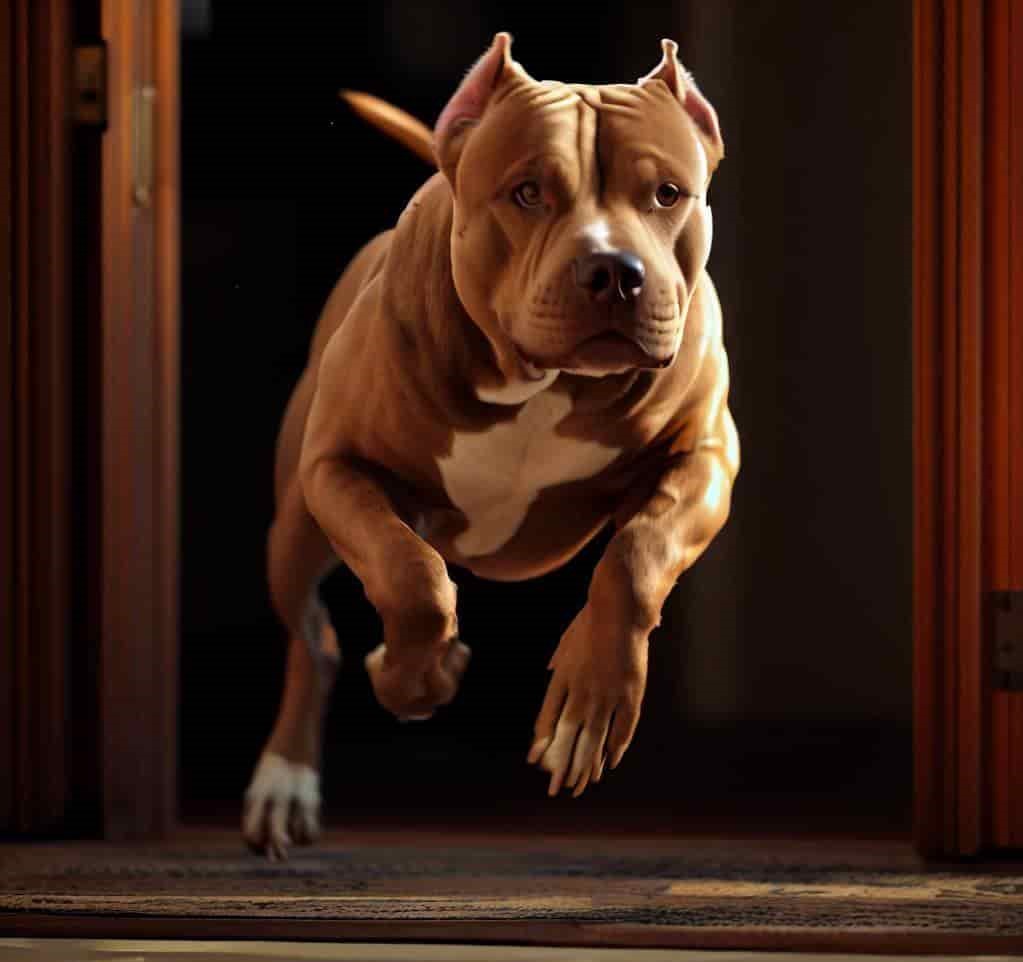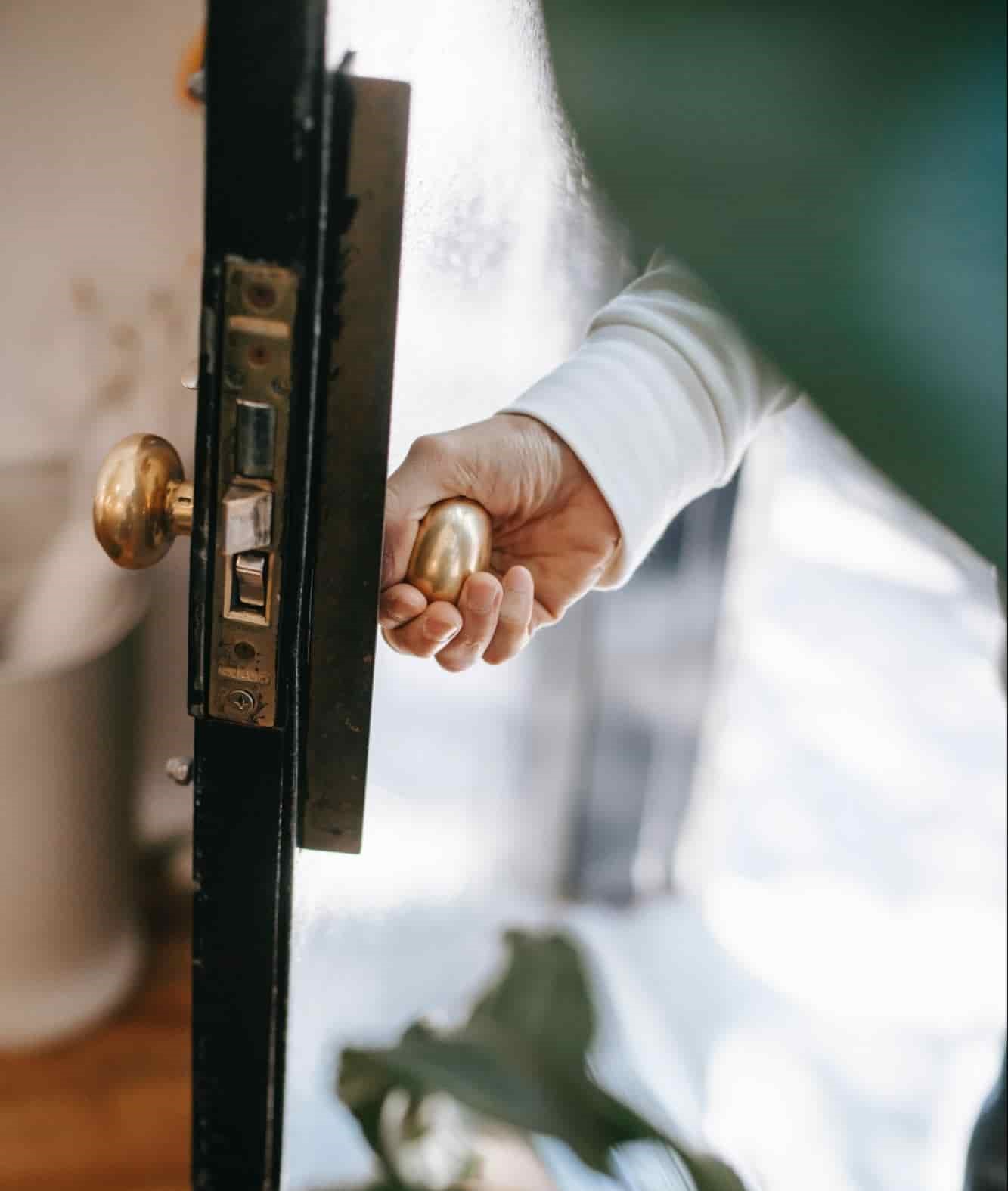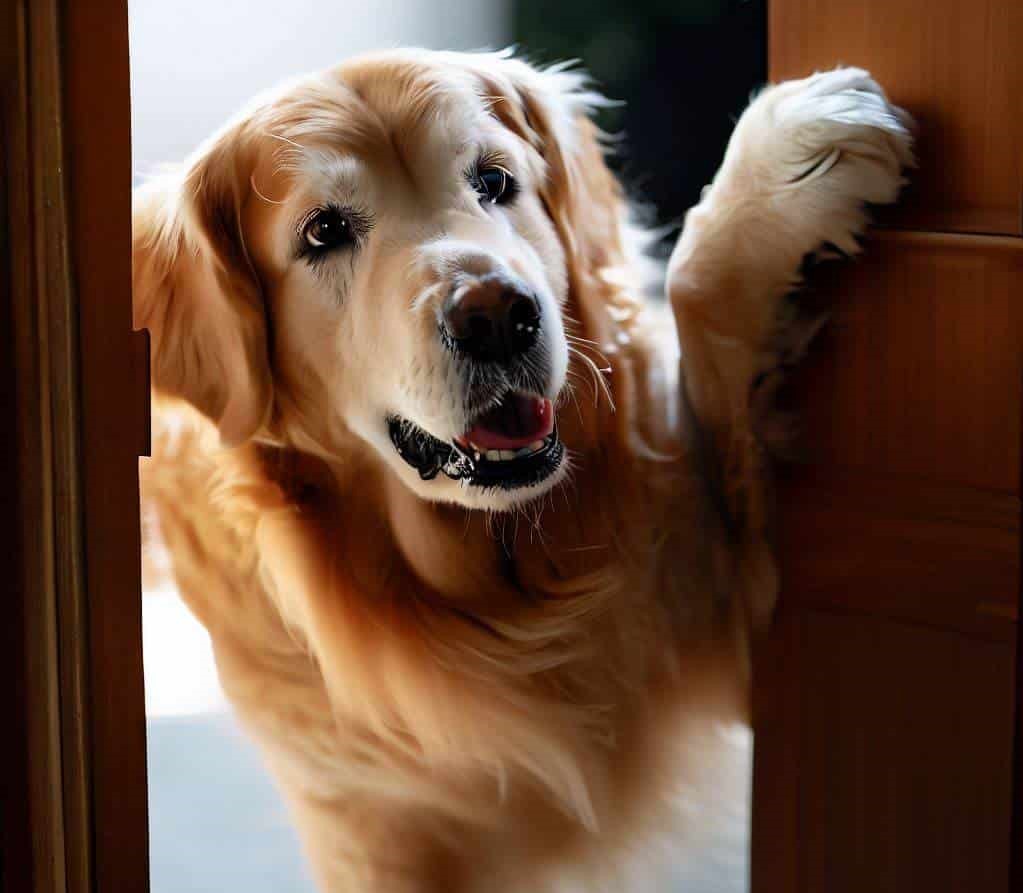Have you ever watched in bemused admiration as your four-legged friend expertly nudged open a door?
I see it all the time with my 6 year old pup and always wonder how she became so skilled at something I always thought was exclusively human territory.
This article takes you on a fascinating journey to understand our canine companions better, and explore a question that has perhaps crossed your mind: “How do dogs know how to open doors?” Yes, it might seem like a trivial or even amusing curiosity, but this question can reveal a lot about their remarkable intelligence.
So sit back, maybe lock your doors (because you never know!), and let’s dive right in.
Table of Contents
Overview of Dogs’ Intelligence and Problem-Solving Abilities
Dogs aren’t just our faithful companions; they’re intelligent creatures with an aptitude for learning and problem-solving that can often surprise us.
Canine Intelligence
Canine intelligence is multifaceted, encompassing understanding commands, interpreting human emotions, and even solving complex tasks. Ever noticed how your dog seems to know when you’re feeling down or how they can fetch a specific toy from a pile of playthings? These are a testament to their intellectual capabilities.
Problem-Solving Skills
Dogs’ problem-solving skills are another indication of their intelligence. They can figure out how to get to a hidden treat, navigate around obstacles, and, yes, even open doors. This knack for problem-solving likely stems from their ancestors’ need to adapt and survive in the wild.
In essence, the intelligent, problem-solving dog by your side is a product of evolution, observation, and adaptation. They’re quick learners, keen observers, and natural experimenters, making them loving companions and fascinating creatures to understand and appreciate.
So, How Do Dogs Know How To Open Doors?

You’ve probably seen a dog push a door open with its snout, but some dogs take it a step further and actually operate the doorknob. How do they acquire this skill?
Cognitive Abilities
Our furry friends are more intelligent than they often get credit for. They manage to understand and replicate human behavior through their inherent cognitive abilities. Watching us open doors offers them insight into the process.
Trial and Error
Further, dogs learn through a process of trial and error. The initial push with the snout may evolve into using a paw to nudge the door open. Eventually, they may even learn to jump up and twist a doorknob, especially if they’ve observed their human doing so.
The fascinating part? Once they learn, they remember. Their memory retention helps them repeat the action whenever they wish, leading to an adventure of unexplored territories!
Analyzing the Dog’s Physical and Cognitive Factors
Dogs’ ability to open doors isn’t merely an accident; it’s a calculated action resulting from a perfect blend of physical attributes and cognitive processes.
Learning and Memory Retention
First, learning and memory retention are often underappreciated aspects of a dog’s cognitive toolbox. Dogs are masters at remembering successful actions. So, when your dog manages to nudge that door open once, you can bet they’ll remember how to do it again. This capacity for memory retention facilitates their ability to solve problems and navigate their world.
Observational Learning and Imitation
Next, dogs are observational learners par excellence. It’s not uncommon to see them imitate their human companions, picking up both our habits and tricks. Observing us handle doors provides them with a blueprint, which they can emulate to achieve the same results.
Trial and Error Experimentation
Finally, the concept of trial and error comes into play. Dogs, like many intelligent creatures, aren’t afraid to experiment. Their curiosity drives them to try different approaches, retaining the ones that lead to success and discarding those that don’t.
So, if a nudge doesn’t work, a paw might, and that door will soon swing open.
Applications and Implications of Door-Opening Behavior in Dogs
The door-opening behavior of our canine friends isn’t merely an entertaining spectacle; it has implications that extend into various aspects of our interaction with them. The scope is surprisingly broad, from learning mechanisms to benefits for pet owners and even potential uses in service roles.
Learning Mechanisms
Our dogs’ ability to open doors provides valuable insight into their learning mechanisms. It showcases their observational learning capabilities, memory retention, and willingness to experiment. Understanding these learning processes helps us train and educate our pets more effectively, fostering a deeper bond.
Benefits for Pet Owners
For pet owners, a door-opening dog can offer practical benefits. It could allow your pet to move around the house more freely, self-regulating their indoor-outdoor time. It can also be a valuable skill for dogs to help their less mobile owners, offering them a greater sense of independence.
Potential Uses of Door Opening in Service, Search and Rescue Dogs
The potential uses extend beyond the home environment too. This ability could be a lifesaver for service dogs, allowing them to access spaces that humans cannot, possibly in emergencies.
Similarly, search and rescue dogs can use this skill to gain access to difficult-to-reach areas, making them even more effective in their critical roles.
Why Does Door Opening Behaviour Can Be Dangerous For Your Dog?
As intriguing and beneficial as a dog’s ability to open doors can be, it’s essential to recognize the potential risks associated with this behavior. From physical injuries to unintended consequences, there are numerous factors to consider.
Physical Injuries
Firstly, the act of opening a door can lead to physical injuries. Dogs may scrape their paws or strain their bodies, especially if the door is heavy or requires a tricky maneuver. Smaller breeds may be particularly at risk due to their size and limited strength.
Accidental Confinement
Secondly, there’s the risk of accidental confinement. Your curious companion may wander into a room and accidentally shut the door behind them. Depending on the room’s content and how long they are trapped, this can lead to stress or even danger.
Escaping and Getting Lost

Thirdly, a door-opening dog has the potential to escape the house, leading to them getting lost or injured in the outdoor world. Busy streets, wild animals, and unfamiliar territory all pose significant threats to a roaming canine.
Unsupervised Access to Hazards
Additionally, a dog’s newfound freedom can lead to unsupervised access to potentially dangerous areas or substances in the house, like cleaning supplies, certain foods, or even a filled bathtub.
Increased Risk of Accidents
The risk of accidents also escalates. Dogs might inadvertently cause items to fall or, worse, trip their human companions by leaving doors unexpectedly ajar.
Behavioral Issues
Behavioral issues might arise, with dogs accessing areas where they are not allowed or even stealing food from kitchen counters.
Home Security Concerns
There are also home security concerns to consider, as dogs might leave doors open, inviting unwanted intruders.
Strained Owner-Dog Relationship
Lastly, persistent problems might lead to a strained owner-dog relationship. Frustration or worry could affect the bond between the pet and the owner, making it necessary to control this behavior to maintain household harmony.
How To Secure All Doors?

Mitigating the risks associated with dogs opening doors involves both physical adjustments to your home and certain behavior modifications. Let’s explore the potential solutions.
Updating Door Hardware
Begin with an evaluation of your door hardware. Child-proof door knob covers or handles that are tricky for your pooch to manipulate can be significant deterrents. Consider switching lever-type handles to round ones, as they are more challenging for dogs to operate.
Consistent Door Check
Adopt a consistent routine of checking your doors. Ensure they are closed and locked when not in use, preventing accidental escapes or unsupervised explorations. Remember, the few seconds it takes to double-check can save a lot of trouble down the line.
Training Your Dog
Training can play a vital role here. Commands such as “stay,” “leave it,” or “off” can be effective if your dog is trained to respond to them. A professional dog trainer can be helpful in such scenarios, reinforcing these commands and controlling door-opening behavior.
Using Gates or Barriers
If all else fails, or in addition to the above measures, consider installing baby gates or pet barriers. They can block off certain areas, offering you more control over where your dog can go.
Conclusion
So this was the answer to your question about how do dogs know how to open doors. Our dogs‘ ability to open doors is a testament to their intelligence and adaptability. However, it’s a double-edged sword with benefits and potential dangers.
As responsible pet owners, it’s our job to ensure their curious exploration doesn’t compromise their safety or the harmony of our homes.
So next time you catch your canine companion in the act, remember: they’re not just being mischievous. They’re showcasing their remarkable cognitive abilities – it’s all part of the wonder that is man’s best friend.
FAQs
Can I train my dog to open doors on command?
Yes, you can teach your dog to open doors on command with consistent training and positive reinforcement. However, be mindful of the potential risks discussed earlier.
Is a dog’s ability to open doors connected to their age?
While age can play a role in a dog’s physical ability to manipulate a door, even young puppies can learn the basics of door opening through observation and imitation.
Can certain types of door materials deter dogs from opening them?
Doors made of smooth materials like metal or certain types of polished wood might make it harder for dogs to grip, potentially deterring them from opening these doors.

